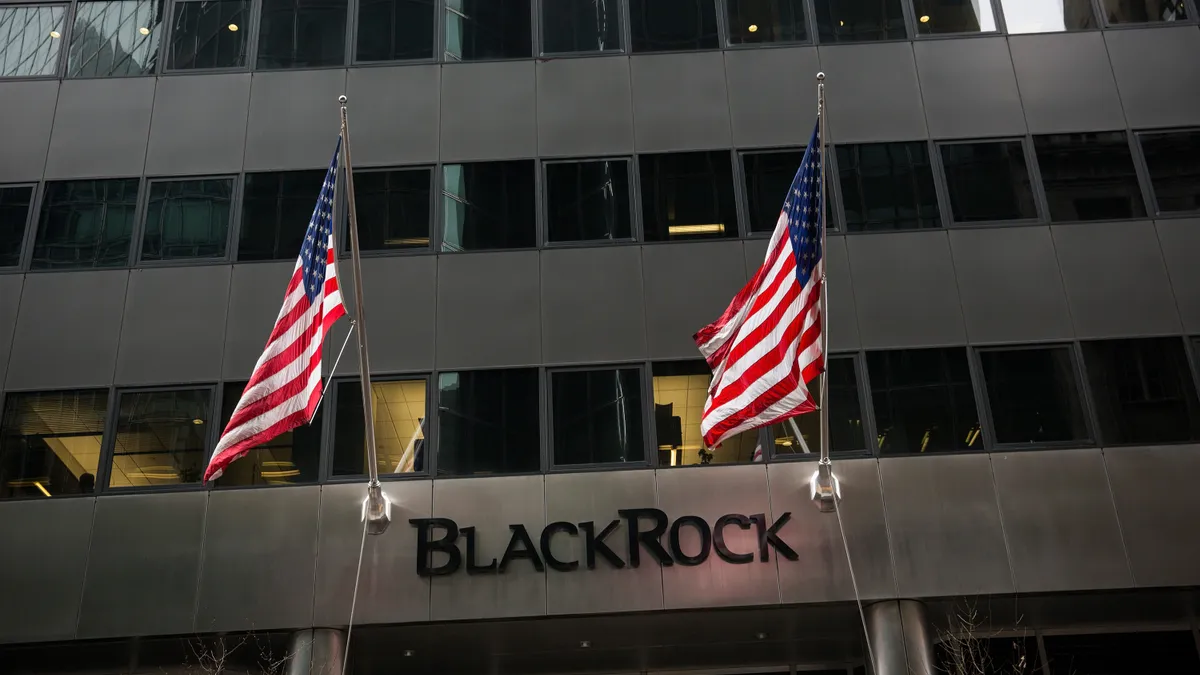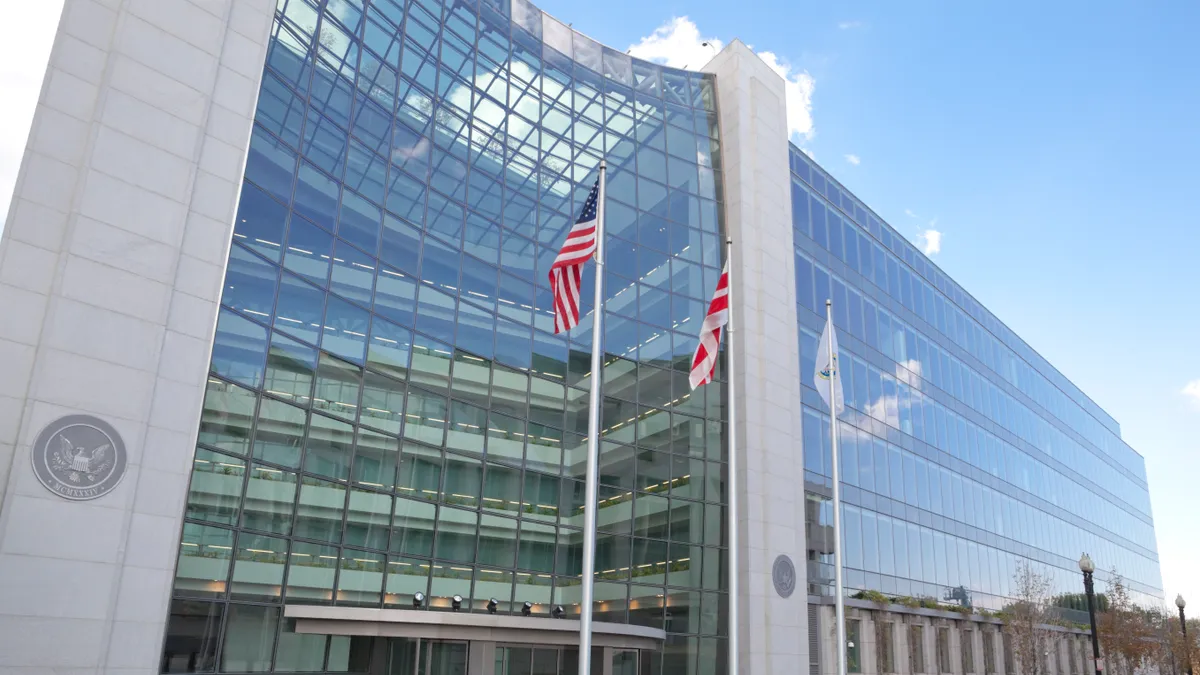As the industry grapples with new regulations on supply chain disclosure, James Schaffer says fashion and apparel companies should look beyond just complying with rules to “move the needle.”
Schaffer is the chief strategy officer for Worldly, where he oversees business development, client services, partnerships and corporate development. Worldly is a platform for environmental and social impact data for the apparel and footwear industry that hosts the Higg Materials Sustainability Index. The company rebranded from its old name, Higg Co., last year.
Worldly has almost 400 brands using its platform, and Schaffer said the platform connects to almost 50,000 individual factories to collect environmental and human rights data. Worldly gathers that data so customers can have it for various disclosure regulations, Schaffer said. Worldly is also looking to help customers track their progress on their science-based targets for their sustainability goals.
ESG Dive’s sister publication, Fashion Dive, spoke with Schaffer shortly after the U.S. Securities and Exchange Commission removed scope 3 emissions from its final climate disclosure rule to discuss its potential implications for brands. Implementation of the rule was paused after it was faced with several legal challenges.
While Schaffer noted that the SEC rule is worth paying attention to, he said regulations such as California’s SB 261 and SB 253, which relate to disclosing greenhouse gas emissions and climate-related financial risk, and European regulations such as the Corporate Sustainability Reporting Directive are a better gauge on where the industry is heading.
“I think the SEC move is very interesting in the arc of history, and obviously we need to pay close attention to it, but it is essentially a single materiality piece of regulation, where the CSRD and the California regulations are double materiality: making you look at environmental impact and financial impact at the same time,” Schaffer said.
Editor’s note: This interview has been edited for brevity and clarity.
FASHION DIVE: What in particular in those California regulations should apparel companies watch out for?

JAMES SCHAFFER: It’s really about scope 3. We know that that’s where the impact lives. You can say the same thing about most consumer products categories, but you can definitely say anything textile related, 80% — or some reports say 90% or more — of your carbon intensity is in tier two or below. That’s the big difference from the SEC regulations, and so it really poses a challenge to an apparel brand, and even more so to an apparel or fashion retailer: to have those manufacturing relationships to the point that you can actually ask for the data and deploy measurement tools, such as those Worldly provides, to your manufacturing partners. That’s step one.
Step two is how deep can you go, and how high resolution of data can you collect? California is just really quite amazing in that it emulated some of this regulatory innovation from Europe. This impacts the vast majority of the industry that is selling products in California. They are going to have to disclose pretty high resolution and emissions data. If you really want to get to that carbon intensity, that means you have to have a relationship and be able to collect primary data from tier two and even tier three supplier partners in your supply chain. That’s hard to do.
Since the bulk of a brand’s emissions are deep in the supply chain and not as readily accessible, how can brands disclose their environmental impact without being accused of greenwashing?
It’s tough. I think what we’re seeing is that you have to be brutally clear about the source and the age of the data that you’re using to substantiate a claim or your public materials or something you disclose.
I think you have to be willing to spotlight areas where you feel like you’re exceeding regulations, but don’t let that veer into marketing speak. I think we have to be boring on this. We have to really stick to the facts, identify the processes, using some measurable ambitions, identify areas where you’re lagging, and when your commitment is an approach for closing those gaps and improving your data over time.
In the consumer products industry, and particularly in fashion, it’s a constant battle to differentiate your stewardship of the environment, and your supply chain. So we understand the urge to claim credit. But what has happened in the last 10 years is the regulators have said that altruistic intention sort of suffused with marketing instinct has not generated enough progress. So now we’re going to regulate. I don’t know how many regulators you know, but the ones I know are not really interested in marketing speak. It’s all about your facts, transparency, and about how you came to those facts.
How can brands show investors and customers that they’re working on sustainability without too much marketing language?
I think it’s possible to have a total shift in what almost every brand does, and that is to publish an annual sustainability report. Instead of regulations being the thing that you don’t want to talk about, I think having a very sober, transparent and crystal clear communication to your stakeholder group, which include investors, consumers, NGOs, and maybe monitoring you in addition to the regulatory environment. I think that might be a more powerful form of marketing.
But if you read the last 10 years of sustainability reports, it’s sort of a, “Rah, rah, we’re great. Here’s where we’re leading the planet to a safer and more adjusted place.” I’d like to see that tone change and really drill in on the facts and drill in on exactly where you are as a fashion brand in your own maturity model and your journey. I think consumers are a lot smarter and more sophisticated than all of us or some brands believe. They can take it, and I think they will appreciate and respect that sober and crystal clear view on where you are in terms of your performance vis-à-vis regulation.
What is a common mistake brands make in approaching disclosures?
Something that really comes to mind from that level is lack of transparency. We all have good colleagues in the consulting industry, and I think they have a really key role to play in this march to regulatory disclosures. But the downside of it is, if you’re a brand or retailer in fashion or apparel, and you work with a consultant and you create a totally nontransparent approach to collecting data or doing product level footprint calculations, it’s as if you’ve gone off on your own and you’re not aligned with what the standards are and tools like the Higg Index that the industry has aligned around. That’s a big mistake, because you’re basically going to put a target on your back, and you’re gonna be put on the defensive to answer for your approach.
Even if your approach is good when you explain it, no one will have ever heard of it before, and it just feels sort of bespoke and nontransparent.
What do you think is a question about sustainability and disclosures that the industry isn’t addressing right now?
Here’s what I think is the elephant in the room in this current era of sustainability data management, and it’s sort of a two-sided coin.
The good side of it is, regulation is going to force more rapid improvement. But regulation should be the floor on performance. I think if we all just comply, we’re gonna be a sort of middle-of-the-pack industry. And that’s actually not what it’s gonna take to move the needle.
Just take carbon as one of the impact areas. That’s not what it’s going to take to move the needle on human rights. It’s not going to be what it takes to move the needle on water, or any of the other impact areas. There was this wonderful spirit five to seven years ago of, “How good can we actually get?” Unfortunately, it got kind of hijacked by marketing, as we’ve said before. But as we all work toward compliance, the question we’re not asking ourselves is, “How can we actually exceed regulatory requirements, and actually become the poster child industry for how clean and fair and just you can operate a value chain?” I’m afraid that’s getting lost in this regulatory era.





















